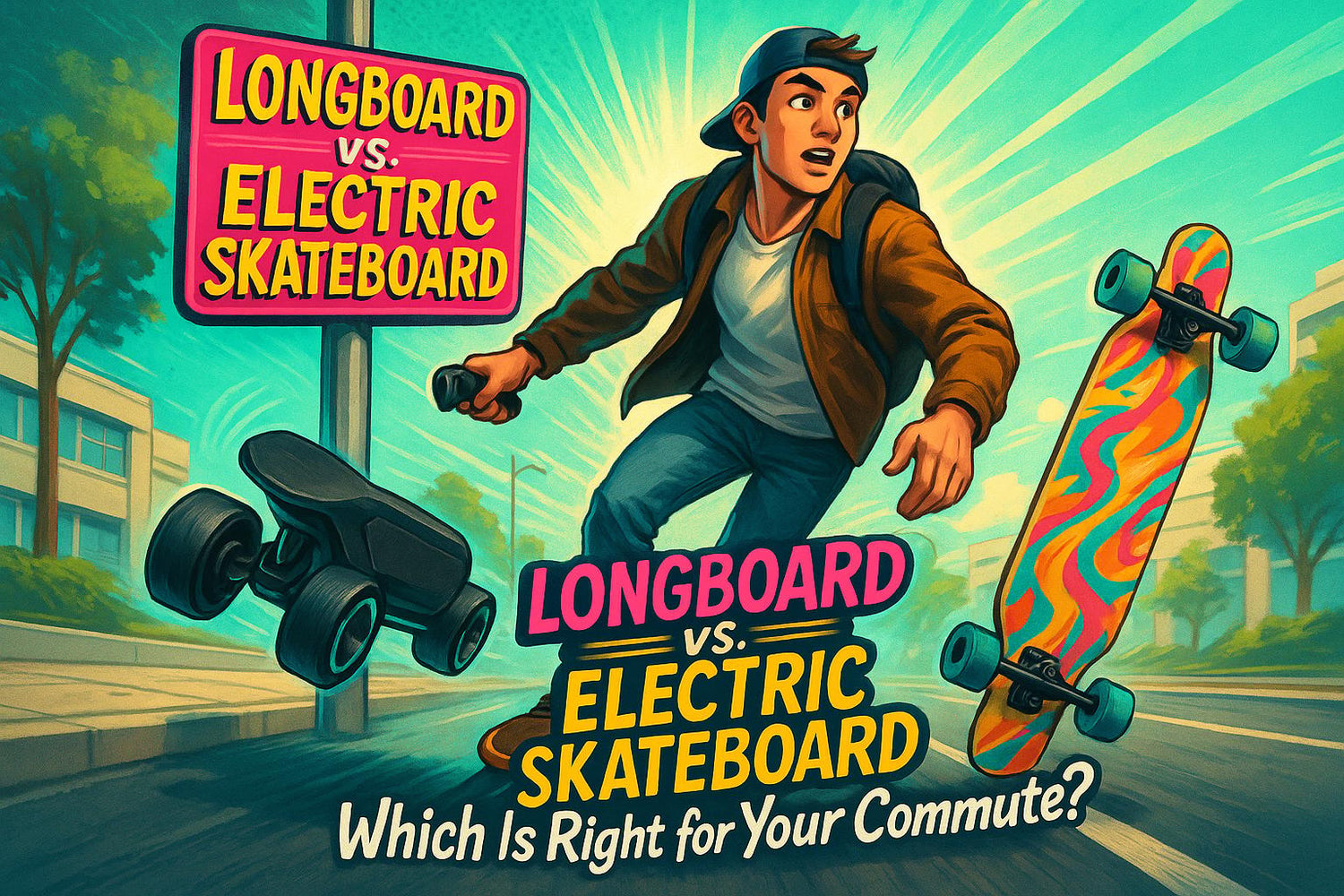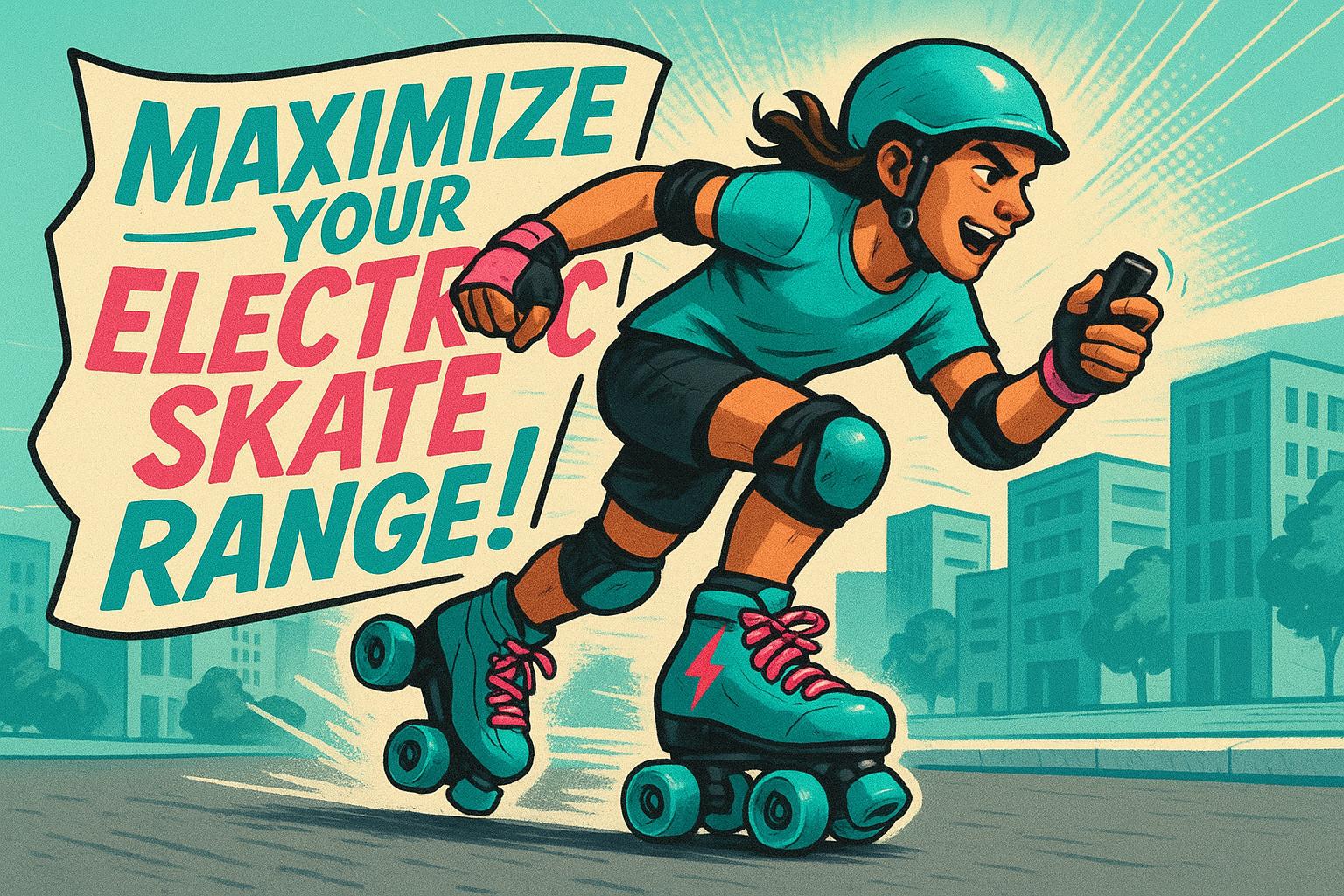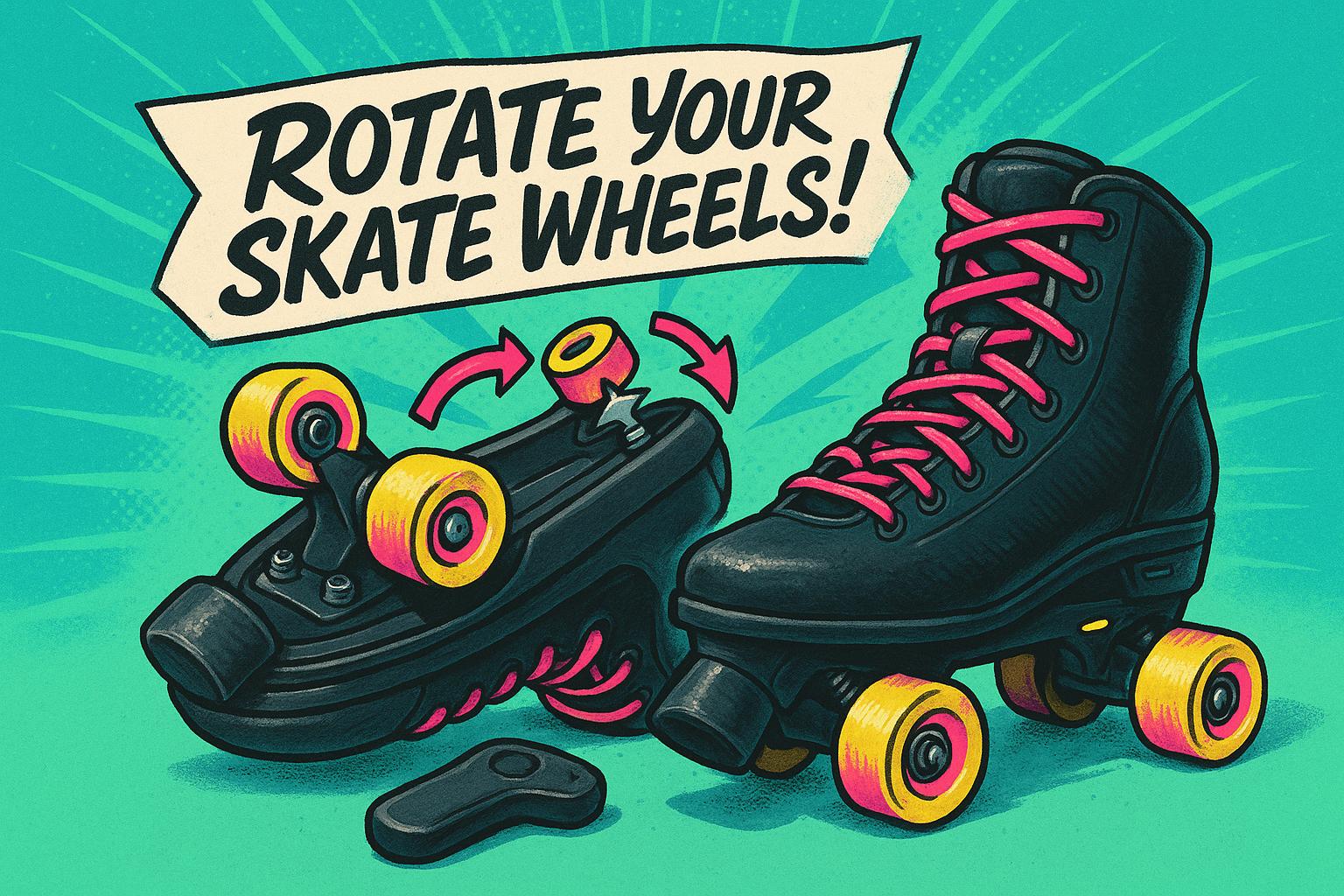If you’re deciding between a longboard and an electric skateboard for your commute, here’s the quick answer:
- Longboards are lightweight, affordable, and require no battery. They’re great for short, flat commutes and are easy to carry. However, they rely entirely on your effort, making hills and long distances challenging.
- Electric skateboards are motorized, making them ideal for longer commutes, steep inclines, and mixed terrains. They’re faster but heavier, pricier, and need regular charging.
Quick Comparison
| Feature | Longboard | Electric Skateboard |
|---|---|---|
| Speed | 8–12 mph (rider-powered) | 15–28 mph (motor-powered) |
| Portability | Lightweight, easy to carry | Heavier due to motor and battery |
| Cost | $50–$150+ | $300–$2,000+ |
| Effort | Requires physical pushing | Minimal effort, motorized |
| Terrain Performance | Best on smooth, dry surfaces | Handles inclines, uneven terrain |
| Weather Resistance | Better in wet conditions | Vulnerable to water damage |
Choose a longboard if you want a simple, low-cost option for shorter trips. Go electric if you need speed, convenience, and help with hills or longer distances.
Electric Longboard vs Normal/Regular Longboard || How to choose
What Are Longboards?
A longboard is like a stretched-out version of a traditional skateboard, designed with cruising and commuting in mind. While regular skateboards are usually 28 to 32 inches long, longboards measure between 33 and 60 inches in length and are typically 9 to 11 inches wide.
But the differences don’t stop there. Longboards are built with larger, softer wheels and often sit lower to the ground compared to standard skateboards. These features create a smoother and more stable ride. Longboarding has its roots in the 1940s, when it was developed as a land-based alternative to surfing. It gained traction in the 1970s with the invention of urethane wheels. Today’s longboards are made from modern materials like fiberglass composites, aluminum, carbon fiber, and bamboo.
Below are some reasons why longboards are a smart option for urban commuters.
Benefits of Longboards for Commuting
- Stability and Comfort: Thanks to their longer wheelbase and bigger deck, longboards offer a stable platform that’s great for beginners. This stability makes them comfortable for long-distance rides.
- Affordable Transportation: A quality commuting longboard starts at around $150, with basic models available for as low as $50. Once you’ve purchased a board, there are no ongoing costs like gas, insurance, or parking.
- Eco-Friendly: Longboards are powered entirely by you, so they produce zero emissions - an environmentally friendly way to get around.
- Easy to Carry: Their lightweight design makes it simple to bring them into buildings, onto public transit, or even up a flight of stairs.
- Low Maintenance: Longboards require very little upkeep. Occasional cleaning of the bearings and rotating the wheels is about all it takes to keep them in good shape.
Drawbacks of Longboards
- Physical Effort: Every push, hill climb, and acceleration depends on your energy. This can be tiring, especially on hot days or when you’re dressed for work. Steep inclines may even force you to walk.
- Speed Limits: While riders can typically cruise at 8–12 mph on flat terrain, faster speeds downhill aren’t practical for everyday commuting.
- Weather and Surface Issues: Rain can make the ride slippery and may damage the deck if water seeps in. Longboards also struggle on rough pavement, gravel, or cracked sidewalks, performing best on smooth paths or well-paved streets.
- No Built-In Storage: Longboards don’t have space for carrying items. You’ll need to rely on a backpack or messenger bag for your belongings.
What Are Electric Skateboards?
Unlike traditional longboards that rely entirely on the rider's power, electric skateboards come with motorized assistance, offering a modern twist to urban commuting.
At their core, electric skateboards are standard boards equipped with a battery-powered motor and a wireless remote. This setup allows riders to accelerate, brake, and even reverse without the need for manual effort. Most models use lithium-ion batteries mounted under the deck, with the range varying based on the skateboard model and riding conditions.
What sets electric skateboards apart is the inclusion of advanced features like regenerative braking, which recovers energy while slowing down or descending hills. Many models also come with extras like LED lights, smartphone connectivity, and multiple speed settings, giving riders better control and added safety.
Recent improvements in technology have made these boards faster, more reliable, and capable of handling different terrains with ease.
Benefits of Electric Skateboards for Commuting
- Effortless Speed and Range: The motor keeps you moving at a steady pace, minimizing physical strain during long rides.
- Hill-Climbing Made Easy: Powerful motors help conquer inclines that would otherwise require significant effort.
- Enhanced Control: The wireless remote provides smooth acceleration and braking, with adjustable speed settings that are particularly helpful for beginners.
- Smart Features: Many boards connect to smartphones, enabling riders to check battery levels, track rides, tweak performance settings, and even lock their board remotely.
- Consistent Commute Times: Electric skateboards offer dependable performance, ensuring you can stick to a schedule regardless of terrain or fatigue.
Drawbacks of Electric Skateboards
- Higher Cost: Compared to traditional longboards, electric models come with a steeper price tag.
- Battery Concerns: Limited battery life can leave you pushing the board manually if it runs out mid-ride.
- Heavier Build: The added weight of motors and batteries can make these boards less convenient to carry, especially on stairs or public transit.
- Maintenance Needs: Motors, batteries, and other electronic components require regular care, including charging and protection from water.
- Weather Restrictions: Moisture can damage the electronics, making rainy conditions a challenge for electric skateboards.
- Braking Adjustment: Regenerative braking feels different from traditional methods, so new riders may need time to get used to the system.
sbb-itb-bf837b9
Longboards vs Electric Skateboards: Side-by-Side Comparison
Let’s break down how longboards and electric skateboards stack up when it comes to key factors like speed, portability, cost, and more.
Speed
Electric skateboards typically cruise between 15–20 mph, with some reaching up to 28 mph. On the other hand, longboards rely entirely on rider effort. While they can hit impressive speeds on downhill slopes, maintaining speed on flat terrain requires continuous pushing, which usually results in slower averages.
Portability
When it comes to portability, traditional longboards are the clear winner. They’re lighter and easier to carry. Electric skateboards, with their motors and batteries, are heavier. Mini electric models strike a balance, being more portable but slightly less comfortable to ride. All-terrain electric boards, however, are bulkier and harder to lug around.
Cost
Longboards are more budget-friendly due to their simple design and lower material costs. They also have minimal upkeep expenses. Electric skateboards, however, come with a steeper price tag upfront. On top of that, they have ongoing costs for things like battery replacements, charging, and occasional motor repairs.
Environmental Impact
Longboards are completely emission-free, making them an eco-friendly choice. Electric skateboards, while cleaner than cars, still require electricity and proper battery disposal. That said, if an electric skateboard replaces car trips, it can significantly reduce your overall environmental footprint.
Learning Curve
Longboards demand skill development in areas like foot braking, carving, and pushing, which can be useful for other types of skating. Electric skateboards, by contrast, are easier to control thanks to wireless remotes, though riders need time to get used to features like regenerative braking. Both options require balance and basic skateboarding know-how, but the control methods differ significantly.
Weather and Terrain Performance
Neither option is perfect for rough or wet conditions. Longboards excel on smooth, dry pavement, while electric skateboards - with their larger wheels - handle uneven terrain and steep inclines better. However, electric skateboards are more vulnerable in rainy weather, as moisture can damage their motors and batteries. Most manufacturers strongly advise against riding them in wet conditions.
Best Choice for Different Commute Types
When it comes to choosing the right board for your commute, it all boils down to the unique demands of your daily route. Below, we break down the best options based on different commuting scenarios.
Short City Commutes
If your commute involves short distances, frequent stops, and crowded sidewalks, a longboard is a fantastic option. Its lightweight design makes it easy to carry, and since these trips are usually quick, you won’t have to worry about battery life. However, if your route includes steep inclines, an electric skateboard can be a game-changer, offering a motorized boost to tackle those climbs with ease.
Longer Suburban Routes
For longer rides on smooth suburban streets, electric skateboards shine. They reduce the physical effort of constant pushing and help you cover more ground in less time. Just make sure to choose a model with a battery range that comfortably handles your entire round trip - no one wants to run out of juice halfway home.
Mixed-Terrain Commutes
If your commute takes you across a mix of surfaces - like smooth pavement, bumpy sidewalks, and the occasional off-road stretch - an electric skateboard with larger, softer wheels is your best bet. The motorized assistance and improved traction make dealing with uneven terrain much easier. On the other hand, longboards are a solid choice if you often face wet conditions or need something more portable for frequent carrying. They’re lightweight and versatile, making them great for unpredictable routes.
Conclusion
The best choice for your commute ultimately depends on your specific needs and priorities. Both longboards and electric skateboards bring distinct benefits to the table, making urban travel easier and more enjoyable.
Longboards are a great fit for those who value simplicity and reliability, especially on shorter city trips or routes where you might need to carry your board frequently. Their lack of battery reliance makes them a hassle-free option, particularly in unpredictable weather.
On the other hand, electric skateboards shine when it comes to longer commutes or tackling tough terrain. Whether you’re facing steep hills or simply want to reduce physical effort, the motorized boost can make a big difference. While they do come with a higher upfront cost, they’re often a favorite for suburban riders with more demanding routes.
Take a moment to think about your daily travel patterns, how much you’ll need to carry your board, and your comfort level with technology. For some, the simplicity of a longboard is ideal, while others may find the power and convenience of an electric skateboard to be a game-changer.
Whichever you choose, both options promote cleaner, more efficient urban travel, helping you cut down on car use and public transit reliance while enhancing your daily commute.
FAQs
Which is better for commuting on both flat roads and steep hills: a longboard or an electric skateboard?
If your daily route includes a mix of flat roads and steep hills, an electric skateboard might be your best bet. Thanks to its motorized capabilities, it can effortlessly conquer inclines while maintaining a steady pace on even terrain. Most electric skateboards are built to handle hills with gradients ranging from 15–30%, making them a solid choice for varied landscapes.
On the flip side, a longboard excels at cruising on flat surfaces or slightly uneven roads. However, it generally doesn’t have the power to manage steep hills effectively. For routes with noticeable elevation changes, an electric skateboard will deliver a smoother and more reliable experience.
How can I maintain my electric skateboard to keep it in good condition, especially after riding in wet weather?
To keep your electric skateboard running smoothly, especially after riding through wet conditions, it’s important to give it some care and attention. Start by wiping down the deck, trucks, wheels, and bearings with a dry cloth to remove any moisture. After that, let the board air out for a few hours in a cool, dry spot - away from direct sunlight or damp environments.
Make it a habit to inspect your bearings for any signs of rust or damage. Applying lubricant regularly can help prevent corrosion and keep everything in good working order. If you notice worn-out parts, like damaged bearings, replace them right away to avoid bigger problems down the line. For extra protection, consider using weather-resistant seals or coatings on sensitive components to help reduce water damage. And while your board might handle a bit of moisture, try to limit its exposure to water to ensure it lasts as long as possible.
What safety gear and precautions should I consider when riding an electric skateboard in the city?
When you're cruising on an electric skateboard in urban areas, making safety a priority is non-negotiable. Start with the basics: always wear a certified helmet. For extra protection, especially if you're a beginner or tackling tricky terrain, gear up with wrist guards, knee pads, and elbow pads. If you're riding at night or in low-visibility settings, reflective clothing or LED lights can make a big difference in ensuring others see you. And for those venturing into heavy traffic or pushing higher speeds, a full-face helmet provides added security.
Before hitting the road, take a moment to check your board. Look for loose parts or any signs of wear and tear that could cause problems mid-ride. Also, steer clear of risky conditions like wet roads or crowded pedestrian areas - they're accidents waiting to happen. Stick to local traffic rules, keep your eyes peeled for potential hazards, and ride with care. A little caution goes a long way in making every ride both safe and enjoyable.




Leave a comment
All comments are moderated before being published.
This site is protected by hCaptcha and the hCaptcha Privacy Policy and Terms of Service apply.